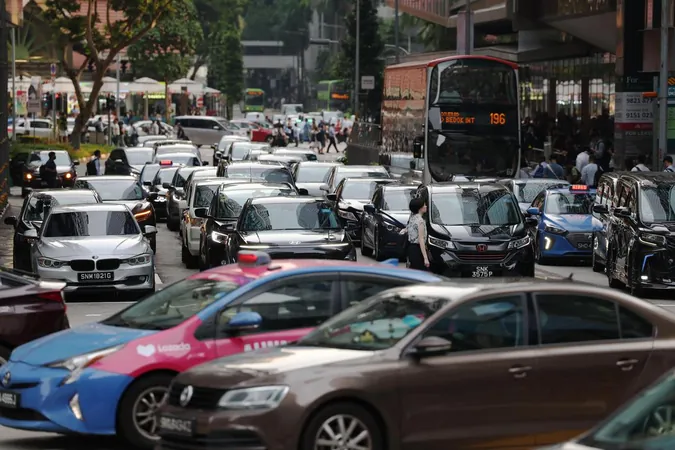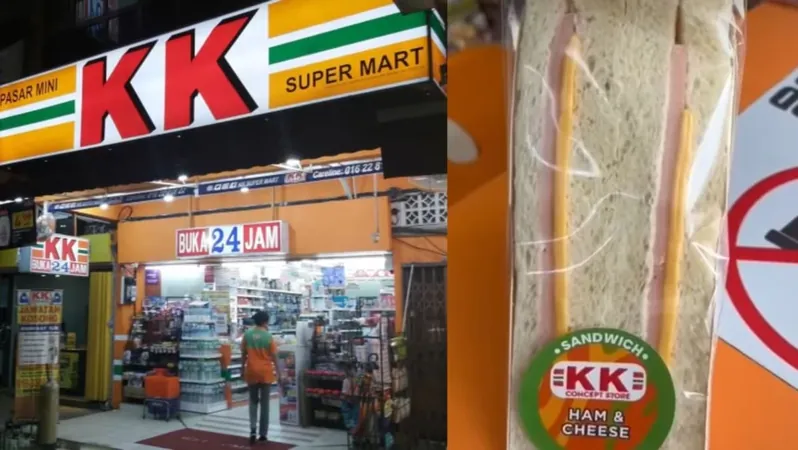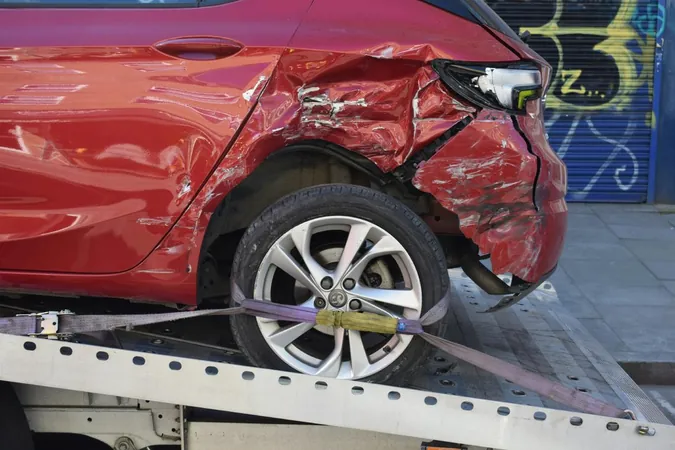
COE Quota Increased by 8.2% to 17,133: What This Means for Singapore's Vehicle Market
2025-01-16
Author: Wei Ling
SINGAPORE – COE Increase Announcement
The Land Transport Authority (LTA) has announced a significant increase in the number of Certificates of Entitlement (COEs) available for bidding from February to April. The latest figures reveal an increase of 1,299 COEs, which is an 8.2% rise compared to the previous quarter's supply, bringing the total to 17,133.
Purpose of the Increase
This upcoming quota period marks the first instance of additional COEs being injected into the system—an effort aimed at alleviating some of the demand pressures in the vehicle registration market. The rise results from a combination of factors, including the number of vehicles deregistered over the last four quarters and adjustments made to manage future supply peaks.
Significance of COEs
A COE is essential for vehicle registration in Singapore, and the number available for tender heavily relies on vehicles decommissioned from the roads. For this period, a total of 4,201 additional COEs will come about from deregistrations and new injections across both car and motorcycle categories.
Details from LTA
While the LTA declined to provide granular details about how many COEs are specifically being added this quarter from guaranteed deregistrations versus new injections, they emphasized that all COEs contribute to a common pool designed to stabilize availability across quarters. This progressive approach aims to smooth out fluctuations in supply and prevent drastic spikes in COE premiums.
Future Plans for COE Supply
The LTA has previously indicated plans to gradually release up to 20,000 extra COEs over the coming years, a response influenced by evolving travel trends. Notably, the overall mileage driven by vehicles in Singapore has decreased by approximately 6% from 2019 to 2023.
Impacts of Technological Developments
This shift, coupled with the rollout of a next-generation satellite-based Electronic Road Pricing system, is expected to help manage traffic congestion more effectively and support adjustments in vehicle population.
Breakdown of COE Categories
Breaking down the categories, the COE supply for smaller cars and electric vehicles (Category A) will see a boost of 10.3%, increasing from 6,190 to 6,828 units. Meanwhile, Category B COEs—designated for larger and more powerful vehicles—will rise by 10% to 4,465. Additionally, the Open category (Category E) will experience an increase of 10.7%, from 1,072 to 1,187 COEs. In the commercial vehicle segment (Category C), the supply will also see a 10% increase to 1,548, while the motorcycle COE supply remains unchanged at 3,105.
Strategic Timing of Announcement
The announcement on January 16 comes just ahead of the final COE bidding exercise for the current November 2024 to January 2025 quota period scheduled for January 22. Industry experts perceive this timing as a strategic move by the LTA to prevent a surge in COE premiums, particularly as car dealers are keen to secure certificates following sales during the Singapore Motorshow earlier this month.
Reactions from Dealers
However, views among dealers vary. Some believe that the increase in COE supply may not be enough to significantly lower premiums, projecting that it could take several bidding cycles to meet the demand created by recent sales. Anthony Teo, managing director of Vantage Automotive, suggests that while premiums might dip in the long term, many dealers will likely approach future bids with caution, primarily due to the new information about COE availability.
In contrast, others like Ng Choon Wee from Komoco Motors foresee sustained high premiums, arguing that the relative increase in COEs is not substantial enough to drastically change market behavior. Ron Lim from Nissan's Tan Chong Motor voiced similar sentiments, noting that market expectations for a more considerable release of the promised 20,000 additional COEs remain unfulfilled.
Looking Ahead
As the vehicle landscape in Singapore evolves, the implications of these adjustments to COE quotas will be closely monitored by consumers and industry players alike.



 Brasil (PT)
Brasil (PT)
 Canada (EN)
Canada (EN)
 Chile (ES)
Chile (ES)
 Česko (CS)
Česko (CS)
 대한민국 (KO)
대한민국 (KO)
 España (ES)
España (ES)
 France (FR)
France (FR)
 Hong Kong (EN)
Hong Kong (EN)
 Italia (IT)
Italia (IT)
 日本 (JA)
日本 (JA)
 Magyarország (HU)
Magyarország (HU)
 Norge (NO)
Norge (NO)
 Polska (PL)
Polska (PL)
 Schweiz (DE)
Schweiz (DE)
 Singapore (EN)
Singapore (EN)
 Sverige (SV)
Sverige (SV)
 Suomi (FI)
Suomi (FI)
 Türkiye (TR)
Türkiye (TR)